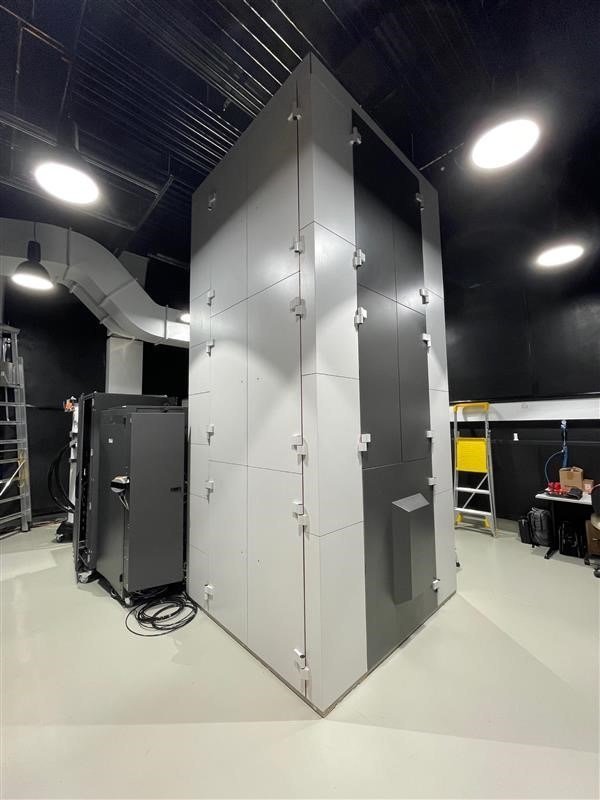Thermo Fisher Scientific Accelerates Complex Materials Research at Monash University
24 May 2021 | Monday | News

The Thermo Scientific Spectra φ is configured to provide enhanced electron beam flexibility to optimize advanced imaging of complex material systems. The Spectra φ was designed and built to meet the specifications of a team led by Professor Joanne Etheridge, of MCEM and Fellow of the Australian Academy of Science. By incorporating Spectra φ into their instrument lineup, Monash University will continue driving groundbreaking research into significant energy related and other initiatives, including high-efficiency photo-voltaic devices, batteries, materials light-weighting, low consumption electronics and clean generation, all which support making the world cleaner, healthier and safer.
"This new instrument enables our researchers to probe matter in innovative ways to visualize features they could not previously see," said Professor Joanne Etheridge, Director of the MCEM. "This will be a vital tool in the development of more efficient solar cells, transport alloys, battery materials, low-energy electronics, catalysts and biodegradable polymers—as well as many other materials that underpin our daily lives."
This flexibility in the control of the electron beam includes the ability to choose both the accelerating voltage and energy resolution, in combination with the largest array of unique, customized apertures ever configured in an advanced Thermo Scientific transmission electron microscope. The system provides electron energy loss spectroscopy (EELS) capabilities and is equipped with an advanced combination of pixelated (S)TEM, optimized (S)TEM, direct electron and low voltage optimized detectors. The microscope, configured on the Thermo Scientific Spectra platform, has the electronic, mechanical and electromagnetic stability needed to maximize data quality for situations such as in-situ experiments when long acquisition times are required.
"This is a revolutionary instrument and a powerful new addition to our world-class Monash Technology Research Platforms," said Professor Rebekah Brown, Senior Vice-Provost and Vice-Provost (research) at Monash University. "Monash is home to an extensive network of world-leading research technology platforms, in-house support and expertise available to our research community and collaborators. We believe innovation requires smart creative collaborations, and this is a prime example. We look forward to the new scientific discoveries it will enable."
"We are thrilled about our ongoing collaboration with Monash University and the opportunity to design a custom-built microscope that will advance materials science," said Rosy Lee, vice president of materials science at Thermo Fisher. "Understanding the value of the unique feature combinations in this microscope is critical to helping us make the most effective commercialization and integration choices for our future products."
Most Read
- Management of Relapsed/Refractory Multiple Myeloma
- 2025 Drug Approvals, Decoded: What Every Biopharma Leader Needs to Know
- BioPharma Manufacturing Resilience: Lessons From Capacity Expansion and Supply Chain Resets from 2025
- APAC Biopharma Review 2025: Innovation, Investment, and Influence on the Global Stage
- Top 25 Biotech Innovations Redefining Health And Planet In 2025
- How Health Systems Are Reshaping Drug Adoption, Partner Models, and Market Access in 2026
- The New AI Gold Rush: Western Pharma’s Billion-Dollar Bet on Chinese Biotech
- Single-Use Systems Are Rewiring Biopharma Manufacturing
- The State of Biotech and Life Science Jobs in Asia Pacific – 2025
- Asia-Pacific Leads the Charge: Latest Global BioSupplier Technologies of 2025
- Invisible Threats, Visible Risks: How the Nitrosamine Crisis Reshaped Asia’s Pharmaceutical Quality Landscape
Bio Jobs
- The State of Biotech and Life Science Jobs in Asia Pacific – 2025
- Avantor’s New CEO Ligner Aims to Unlock Global Potential and Deliver Shareholder Value
- AstraZeneca Commits $50 Billion to U.S. Expansion by 2030 in Biggest-Ever Global Investment
- Thermo Fisher, SAMRC, and South Africa’s Department of Science and Innovation Launch CATIR to Nurture Next-Gen Scientists
- Cube Biotech Appoints Former Sartorius CEO Dr. Joachim Kreuzburg to Board of Directors
- FDA’s AI Transition Marks a Turning Point in Drug Review: Industry Faces Pressure to Adapt Amid 20% Workforce Cut
- WuXi XDC Completes Mechanical Build of Singapore Bioconjugate Manufacturing Hub
News
Editor Picks











